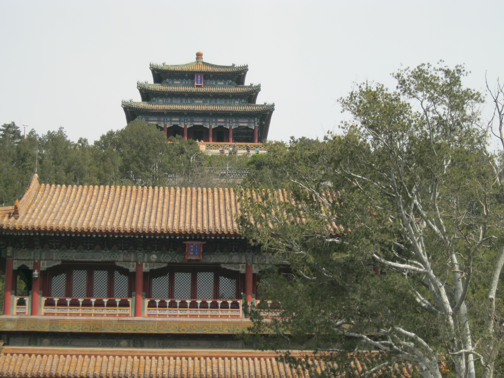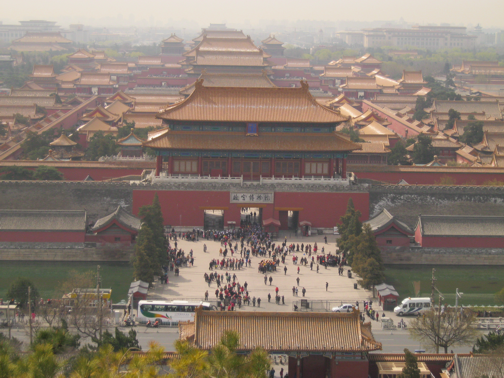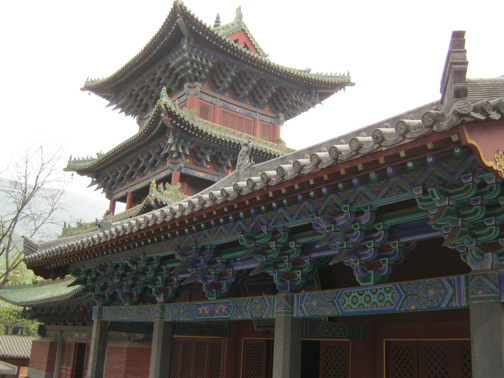Good morning, everyone. As some of you know, I just returned from 12 days in China. As an archaeologist who works in Europe, the Middle East, and the US, I never thought that I would have the opportunity to visit China. However, one of our Chinese colleagues volunteered to host the biennial meeting of the Worked Bone Research Group. The meeting was scheduled right after the annual archaeology meetings Honolulu, so several of us were able to travel from Hawaii to China. I managed to get a great airfare deal that took me from Newark to Honolulu to Beijing and back for only $1190. It was the trip of a lifetime, so I thought that I would share some of my pictures with you.
The WBRG conference was held in Zhengzhou, but we flew into Beijing and were able to spend a couple of days there before the conference. Here is a view of a temple that overlooks the Forbidden City:
And here is a view of the Forbidden City taken from the top of the temple:
Please follow me below the fold.
This is a view of the north end of the Forbidden City showing the moat and one of the corner towers:
The interior of the Forbidden City is crowded with Chinese tourists. Here are two little children dressed up in traditional imperial dress:
Cranes are considered lucky. This is a bronze crane from the Forbidden City:
This is the tree where the last of the Ming Dynasty emperors hanged himself. It is located just north of the Forbidden City:
This is a lovely old bridge near an ancient Fire God temple. It is located just north of the Forbidden City:
The Beijing drum tower is located in a direct line north of the Forbidden City. The drums could be heard throughout the old walled city and were used to sound the hours:
This is the bell tower which is located just north of the drum tower. Dad and I climbed to the top of both. Who needs a Stairmaster?
Dad and I took an all-Chinese (and all Chinese language) tour to the Great Wall. The wall is even more impressive in real life than it appears in photographs. The scale is so enormous. It was definitely one of top the items on my bucket list:
As part of our archaeological conference, we took a tour of two World Heritage sites. This is the Longmen grotto where thousands of Buddhas have been carved into the sides of the mountain. Here is one of the large Buddhas:
This is the Shaolin temple. In addition to touring the temple, we had the opportunity to see a kung fu demonstration here:
The post conference tour went to Xi’an in northwest China. Here is a view of the Islamic market in Xi’an:
And here is some of the food for sale in the Islamic market. These are lambs’ feet:
The Xi’an tomb warriors were discovered from Farmer Yang in 1974. These terra cotta warriors were part of the tomb of the first Qin Emperor who died in 221 BCE. He was the first emperor to unite China, although his empire lasted only about 6 months after his death:
Here is one of the archers:
Farmer Yang comes to the museum most days. If you purchase a guidebook, Farmer Yang will sign it for you. We now have a guide to the terra cotta army signed by Farmer Yang.
Xi’an is one of the few cities in China (or anywhere, for that matter) where the ancient city walls survive. Here is a view of the top of the walls. We walked along the walls from the west gate to the north gate:
Our hotel was located in the center of Xi’an, inside the walls and close to the Islamic market, the bell tower and the drum tower. Here is a view of the bell tower:
Many thanks for stopping by. I am still amazed by the speed of modern travel. We left Beijing on Tuesday afternoon. we crossed the international dateline on the way home, so we were back in NJ on Tuesday night. I was back in class on Wednesday.


















22 comments